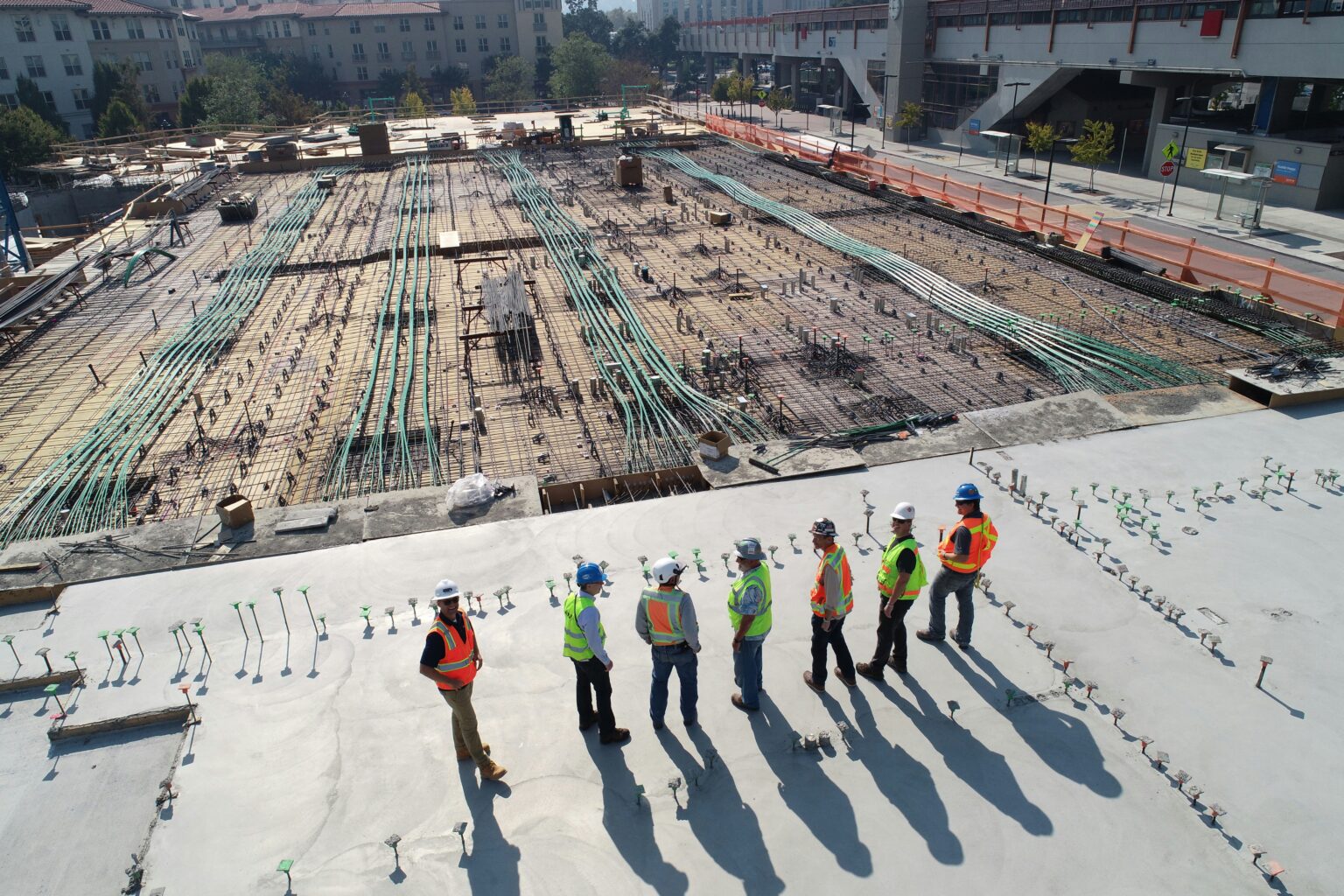Introduction
New technologies are fast changing the construction sector by streamlining procedures, improving efficiency, and increasing safety. Construction technology is changing project management from planning and design to supply chain management and on-site monitoring. This guide discusses how technology is affecting project performance, sustainability, and operational efficiency in modern construction management.
Technology’s Effect on Construction Management
Statista’s 2022 poll found that 78% of Australian construction firms are using new technology.
Technology is helping construction stakeholders improve efficiency, reduce costs, and optimise processes. Digital tools that promote collaboration and communication and data analytics and automation that raise performance are altering construction project planning, management, and completion.
This article discusses how construction technology is revolutionising construction management.
Preconstruction is necessary for any construction. Preconstruction is more efficient, cost-effective, and streamlined thanks to technology.
To make design changes quickly, these tools enable real-time input. Construction technology improves preconstruction planning and saves time and money.
Project Planning and Design
Construction technology aids project design and planning. Project managers can model buildings and infrastructure using modern technologies. These models can uncover design conflicts, test design options, and optimise construction scheduling.
Construction teams can track project progress, schedules, resources, and costs in real time using project management software. Project managers may track milestones and identify hazards before they become issues using automated project tracking and reporting.
Digital Tools Improve Collaboration and Communication
Advanced software like project management software helps construction teams receive feedback and updates, reduce email exchanges, and improve collaboration.
Construction technology improves team communication and decision-making, improving project management.
Construction Site Monitoring
Real-time work updates from construction technology increase safety and reduce site disturbances. Technology can assess prior building sites for abnormalities and provide predictive analytics to identify future issues.
Using construction technology to monitor your work site helps teams remain on track, decrease manual errors, and boost efficiency.
Technology improves safety and efficiency by monitoring construction sites in real-time, identifying potential hazards and enhancing site security. Advanced sensors, cameras, and other digital tools allow construction teams to track worker position, temperature, humidity, air quality, and equipment performance in real time. This data can uncover safety issues, monitor worker well-being, and optimise equipment use and maintenance. Predictive analytics and machine learning assist construction teams anticipate and avert safety hazards.
These tools let project managers make data-driven decisions to improve construction site safety and efficiency.
Supply Chain Management
Construction management software lets project managers track inventory, orders, and deliveries in real time. Supply chain visibility improves procurement efficiency and reduces delays and errors.
Digital collaboration solutions improve supply chain management by helping suppliers, subcontractors, and project teams communicate.
Optimising Material Purchase and Delivery using Technology
Construction teams may streamline, cost-effective, and improve material procurement and delivery by using construction technologies. This helps them interact with stakeholders and anticipate challenges.
Quality Control/Assurance
With digital inspection technologies like advanced sensors and cameras, construction teams can monitor and analyse materials and craftsmanship to spot problems and assure compliance with industry standards and regulations.
Construction teams can evaluate past data and build proactive solutions to avert quality issues with predictive analytics and machine learning artificial intelligence.
Digital Tools for Standards Compliance
Digital inspection technologies help construction crews detect and resolve issues faster. This data can identify difficulties and ensure construction requirements are met.
BIM modelling
Building Information Modelling (BIM) is a digital representation of a structure that contains physical and functional data. This collaborative method creates and manages digital models for architects, engineers, contractors, and other construction stakeholders to use.
BIM improves teamwork, reduces errors, and boosts construction quality. BIM improves collaboration, accuracy, quality, waste, and efficiency during construction. BIM helps stakeholders make better decisions, cut costs, and make buildings more sustainable.
Improved Project Visualisation and Planning
Construction technology lets stakeholders develop and engage with digital models of projects, improving project visualisation and planning. Visualisation and modelling allow stakeholders to build realistic construction project representations. These models can uncover difficulties, assess design alternatives, and improve construction sequencing before work begins.
Modern construction uses drones, robotics, and automation to improve efficiency, safety, and precision.
Drones are used to survey construction sites and obtain reliable data on topography, elevation, and other aspects quickly and cheaply. Robots and AI are utilised in construction to do repetitive, dangerous, or time-consuming activities. Cranes and excavators can be programmed to dig, lift, and move materials, saving time and improving efficiency.
Construction Operations Transformation
Construction technology is changing many aspects of construction. Digital solutions like BIM, project management software, and collaboration platforms enable stakeholders communicate information and coordinate operations, reducing errors and improving project quality.
As technology advances, construction project planning, design, and execution may change even more.
Construction Sustainability
Construction technology helps stakeholders optimise resource utilisation, decrease waste, and design and build sustainable buildings.
Promoting Green Building Practices with Technology
Technology to promote ecologically responsible practices is becoming more vital as the building industry reduces its environmental effect. Technology is essential for sustainable construction and environmental protection for future generations.
Construction Risk Management Using Data
Construction technology improves risk management by offering real-time project visibility and better forecasting and planning.
This helps teams anticipate dangers and plan for them.
Construction Risk Mitigation with Technology
Automated methods enhance accuracy and reduce human error, while safety standards limit site accidents. Wearable technology can monitor workers’ vital signs and alert supervisors to health problems, while drones can examine locations for safety hazards from afar.
Data in construction helps stakeholders make better decisions, boost efficiency and productivity, improve quality control and assurance, improve communication and collaboration, and improve construction site safety.
Improving Project Performance with Data Analytics
Data collection and analysis help teams track project progress and spot dangers before they happen. Analytics-based predictions help teams avoid delays and financial losses by predicting potential issues.
Future Construction Trends
Australian construction is affected by many technical changes. Predictive analytics helps businesses plan for anticipated challenges. Increasing usage of BIM technology is revolutionising design workflows by improving team collaboration.
Energy efficiency improvements like solar power and energy storage minimise construction company operating costs. Construction sites are using autonomous cars to measure distances and inspect more safely.
A person touching a gear-filled screen with words
Using Technology to Advance Construction Management
Construction management with technology has a bright future as technology advances and transforms the business.
The benefits of construction technology include greater communication, collaboration, safety, efficiency, supply chain management, quality control and assurance, and sustainable construction. More stakeholders are using digital tools and data analytics to make data-driven decisions and improve project performance. Drones, robotics, and automation are also improving construction site productivity and safety.
Technology will shape building in the future, improving efficiency, safety, sustainability, and innovation.
Conclusion
As technology continues to evolve, it will play an even greater role in shaping the future of construction management. The integration of digital tools, data analytics, automation, and sustainable practices is driving significant improvements in communication, safety, and efficiency. Construction teams that embrace these advancements will not only optimize their operations but also pave the way for more innovative, sustainable, and resilient projects in the years to come.

















